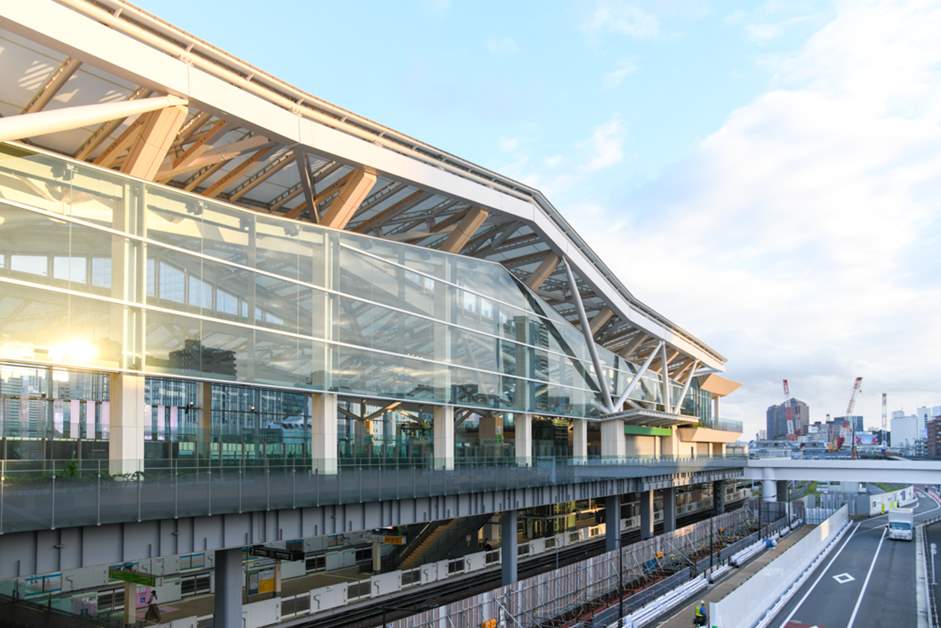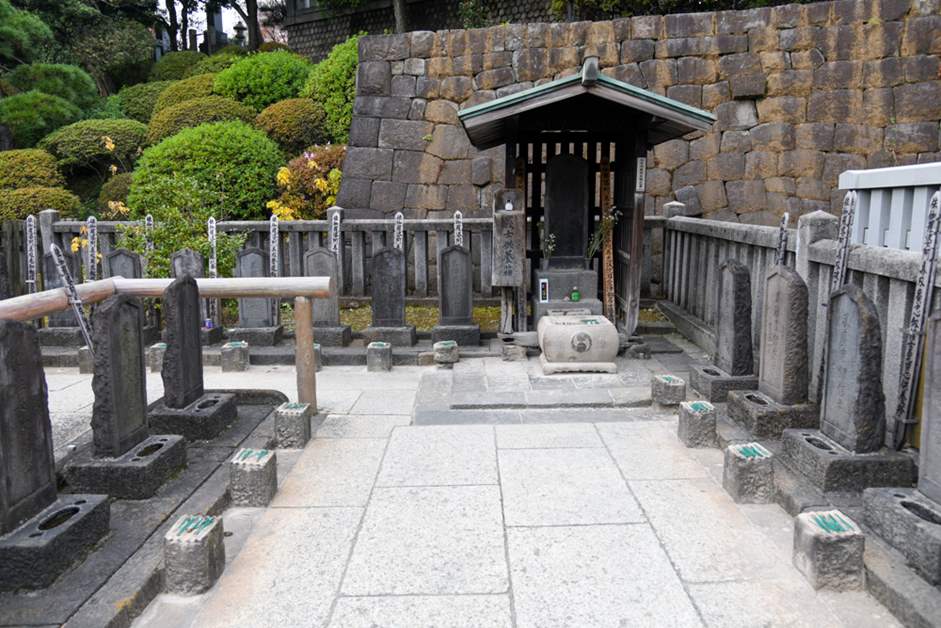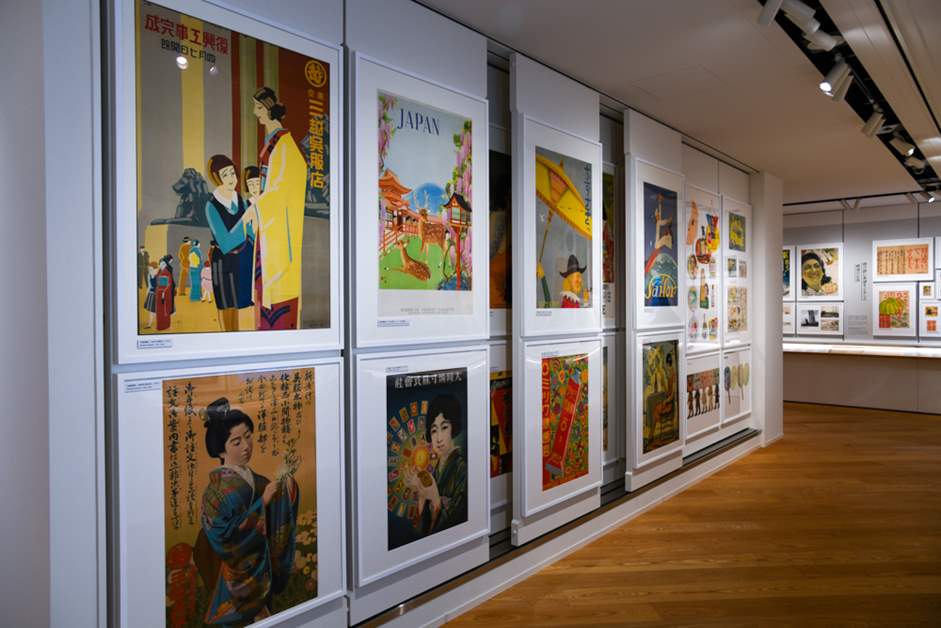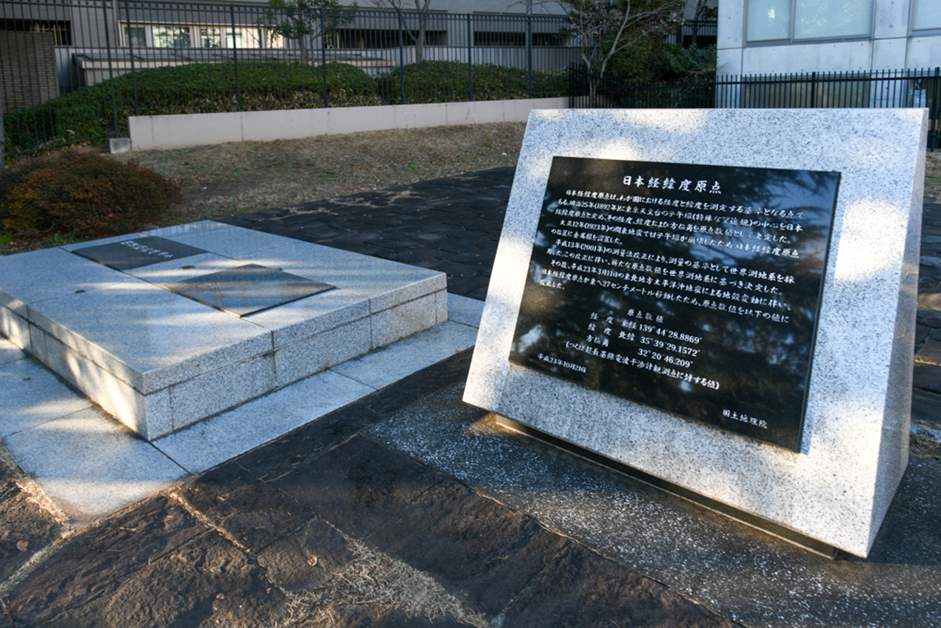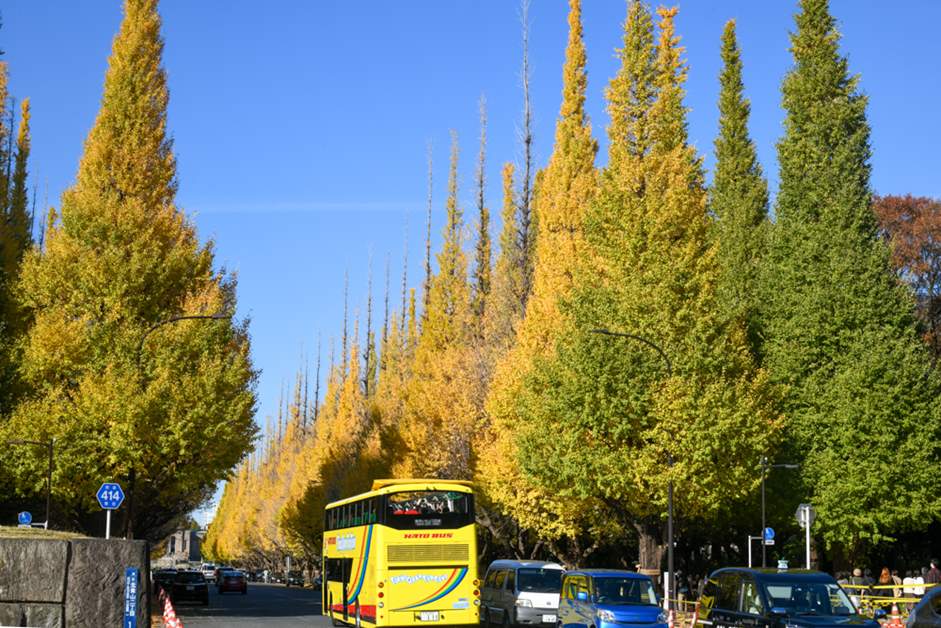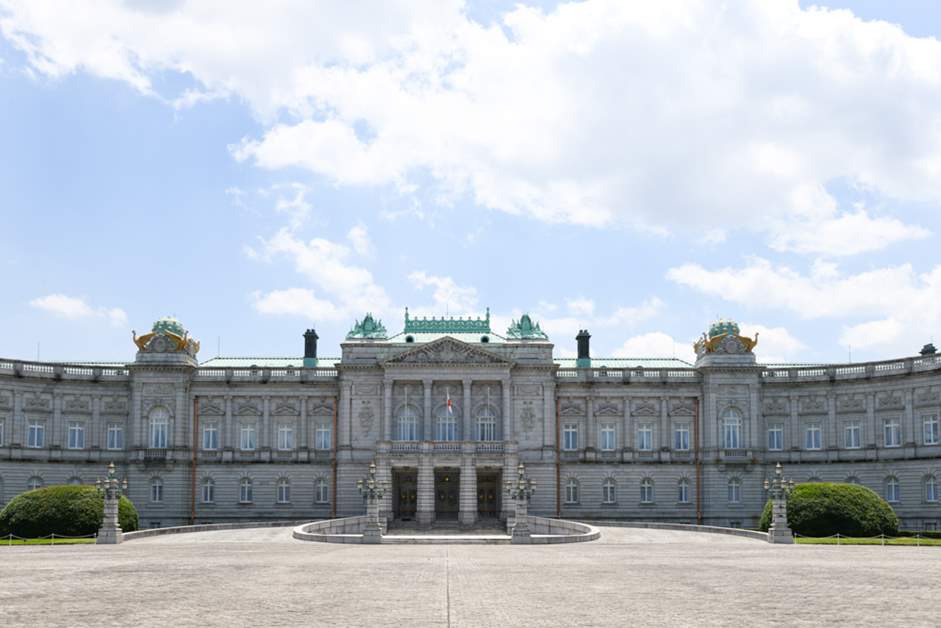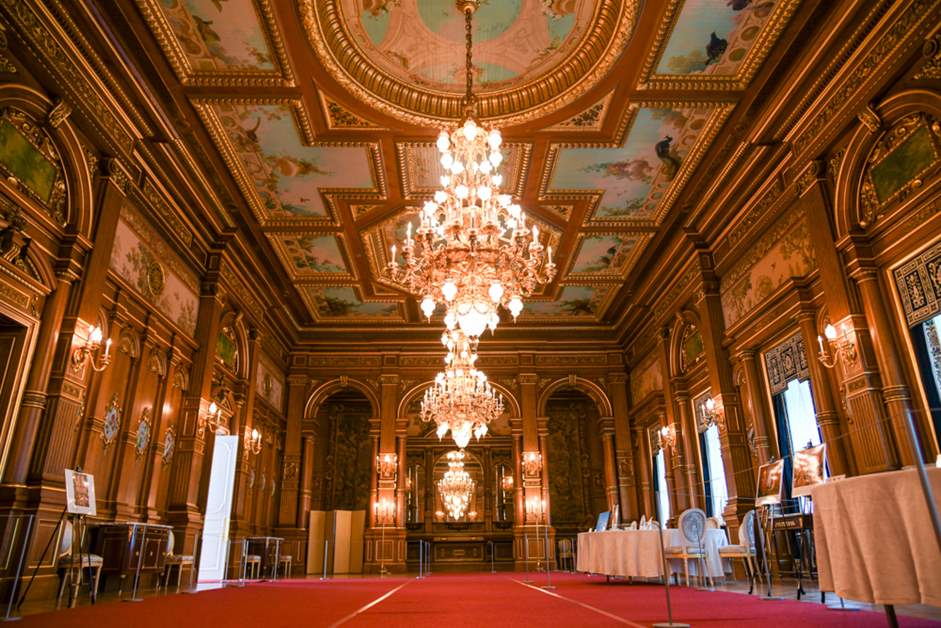The No. 1 Popular Minato Ward Tourist Attraction in South Korea: A Surprising Result? Guide to the Korean version of the "Minato Ward Golden Route."
Tokyo's Minato Ward is home to many popular tourist spots for foreign visitors, including Tokyo Tower, Roppongi Hills, and the National Art Center, Tokyo. Which of these tourist spots actually attracts the most interest from inbound travelers? To answer this question, we would like to introduce the "Minato City Golden Route," a one-day course on the 5 most popular spots by language, based on access data from our website. In this second installment, we present the Korean version.
The trip starts at Takanawa Gateway Station, the "newest station on the Yamanote Line"
The Korean version of the "Minato Ward Golden Route" begins at Takanawa Gateway Station, the newest station on the JR Yamanote Line, which opened in 2020, and the first new station on the line in about half a century. Designed by world-renowned architect Kengo Kuma, the station building has a Japanese design and warmth of wood that gives it a unique glow.
The first spot of interest from South Korea is Sengakuji Temple, an 8-minute walk from Takanawa Gateway Station. Sengakuji Temple is known as a place associated with "Chushingura," which is the subject of kabuki and other traditional performing arts.
"Chushingura" is based on the story of the 47 Ako Gishis (Ako Ronins) who took revenge on the residence of the enemy Kira Uenosuke, in order to avenge the death of their lord, Asano Takuminokami. The story has been the subject of numerous history dramas and movies as an anecdote that strongly expresses the loyalty of bushido (see related article below for more details on Chushingura).
Sengakuji Temple is known as the temple where the Ako warriors visited after completing their raid on the Kira residence at dawn on December 15, 1702, and where they reported their revenge in front of the grave of Asano Takuminokami in Karuuchi. A statue of Oishi Kuranosuke, the Karo who led the 47 warriors, stands to the right of the temple gate, and within the temple grounds are the "Kubiarai Well," where the Gishis are said to have washed Kira Uenosuke's head after the revenge attack, and the "Chikara Ume," which is associated with Kuranosuke's oldest son, Oishi Chikara.
Sengakuji Temple is known as the temple where the Ako warriors visited after completing their raid on the Kira residence at dawn on December 15, 1702, and where they reported their revenge in front of the grave of Asano Takuminokami in Karuuchi. A statue of Oishi Kuranosuke, the Karo who led the 47 warriors, stands to the right of the temple gate, and within the temple grounds are the "Kubiarai Well," where the Gishis are said to have washed Kira Uenosuke's head after the revenge attack, and the "Chikara Ume," which is associated with Kuranosuke's oldest son, Oishi Chikara.
Although the 47 warriors had fulfilled their lord's regret, revenge was a serious crime at the time, and all 47 were judged to receive seppuku. Their graves are in Sengakuji Temple, the same temple as their lord. The cemetery is open to the public, and incense can be purchased and offered before each person's grave. The value of "fulfilling one's duty to one's lord at the cost of one's own life" may be difficult for modern people to understand, but the beauty of bushido may strike people's hearts even overseas.
"For more information on Sengakuji Temple, please see this article!
Minato City History Walk] Feel the good old Japanese soul in the loyalty of the Ako Ronin! Minato City, Tokyo: Tour of Places Related to "Chushingura"
https://visit-minato-city.tokyo/ja-jp/articles/450
Minato City History Walk] Feel the good old Japanese soul in the loyalty of the Ako Ronin! Minato City, Tokyo: Tour of Places Related to "Chushingura"
https://visit-minato-city.tokyo/ja-jp/articles/450
Caretta Shiodome with its free observation deck
Next, from Sengakuji Station near Sengakuji Temple, take the Asakusa Subway Line to Shimbashi Station, three stops away. The next destination is the "Carretta Shiodome" complex, a five-minute walk from Exit 2 of Shiodome.
Caretta Shiodome is centered around an eight-story high-rise tower. Within the building, which has a variety of functions including restaurants, stores, and a theater, is the Ad Museum Tokyo, one of the few museums in the world exhibiting advertising. Here, visitors can learn about the history of advertising in Japan through permanent exhibitions, and see special exhibitions in collaboration with advertising exhibitions from around the world. Art lovers will find a variety of fascinating posters, such as the "Meiji Retro" posters, which were drawn in the Western style during the Meiji period (1868-1912) when there was still little interaction with the West.
Also on the 46th floor is the "SKY VIEW" observation space, which is open to visitors free of charge. From the floor 200 meters above ground level, you can enjoy a panoramic view of Tokyo's bay area. You can enjoy a wonderful panorama both during the day and at night.
The place where you are standing right now is truly a "reference point" in Japan.
Next, take the Oedo subway line from Shiodome station (1-minute walk from Caretta Shiodome) and get off at Akabanebashi station (2 stops for Daimon and Roppongi). From there, walk up Dojikizaka slope with Tokyo Tower by your side, and in about 12 minutes, you will find the monument "The origin of longitude and latitude in Japan".
Located at "139°44' 28.8869'' east longitude" and "35°39' 29.1572'' north latitude," this is the reference point for the location of Japan in the world. The 110,000 triangulation points (reference points for surveying) located throughout Japan are also based on this location. The spot where the Tokyo Astronomical Observatory was once located is now registered as a historical site designated by Minato City.
Visit one of the most photogenic spots in Minato City
Return to Akabanebashi Station and take the Oedo Line bound for Daimon or Roppongi again, getting off at Aoyama-icchome Station, three stops away. With Meiji Jingu Gaien to the north and the office district to the south, this neighborhood is close to the Aoyama Cemetery, where many great figures in Japanese history have been laid to rest and is famous for its cherry blossoms.
"Jingu Gaien Icho Namiki" is a 5-minute walk from this station, and the tree-lined avenue with 146 ginkgo trees lining both sides of a 300-meter straight line is one of the most photogenic spots in Minato City. The most crowded season is from mid-November to early December when many people come to stroll around and take pictures. Although the area is most crowded during the autumn foliage season, it is of course recommended at other times of the year as well.
For more information on Jingu Gaien Icho Namiki, please refer to this article.
Enjoy an entire day in a city colored with the red of autumn leaves! Special Minato-ku "colorful autumn leaves" edition full with places to enjoy the autumn colors from tree-lined avenues to parks
https://visit-minato-city.tokyo/ja-jp/articles/243
"Video Article" Lunch at the gardens of "Meiji Memorial Hall" in Motoakasaka
https://visit-minato-city.tokyo/ja-jp/articles/436
For more information on Jingu Gaien Icho Namiki, please refer to this article.
Enjoy an entire day in a city colored with the red of autumn leaves! Special Minato-ku "colorful autumn leaves" edition full with places to enjoy the autumn colors from tree-lined avenues to parks
https://visit-minato-city.tokyo/ja-jp/articles/243
"Video Article" Lunch at the gardens of "Meiji Memorial Hall" in Motoakasaka
https://visit-minato-city.tokyo/ja-jp/articles/436
The last stop of the trip is gorgeous architecture that combines the beauty of Japan and the West.
The last stop on the Korean version of the "Minato Ward Golden Route" is the "Geihinkan Akasaka Rikyu." It is a 15-minute walk from the Meiji Jingu Gaien Icho Namiki. It is also recommended to take a cab as it is a little far.
The Geihinkan Akasaka Rikyu was built in 1909 as the Crown Prince's residence and was reborn as a guesthouse after the war. Today, this location is still used when foreign heads of state are received by the Emperor and is sometimes used as a venue for important summit meetings.
The Geihinkan Akasaka Rikyu was built in 1909 as the Crown Prince's residence and was reborn as a guesthouse after the war. Today, this location is still used when foreign heads of state are received by the Emperor and is sometimes used as a venue for important summit meetings.
The first authentic Western-style palace built in Japan, the best talent, technology, and materials in the construction world at the time were invested in the building. A tour of the main building and gardens (the seed garden and front garden) takes visitors through the four rooms of the palace, including the "Kacho no ma," "Sairan no ma," "Asahi no ma," and "Hagoromo no ma."
While incorporating Western design and construction methods, the essence of the building is uniquely Japanese in some places. For example, the 30 enamel frames in the Kacho Room, which were jointly created by Japanese painter Shotei Watanabe and enamel artist Sosuke Tawokawa, and the mantelpiece of a Japanese warrior in the Sairan Room are some of those places.
When you have seen everything, standing in the front garden by the main gate and looking out over the facade of the main building, you will surely be in a glamorous mood, befitting the finale of the Golden Route. There is also an open cafe in the front garden, so enjoy the gorgeous architecture and reflect on the day's journey to your heart's content.
When you have seen everything, standing in the front garden by the main gate and looking out over the facade of the main building, you will surely be in a glamorous mood, befitting the finale of the Golden Route. There is also an open cafe in the front garden, so enjoy the gorgeous architecture and reflect on the day's journey to your heart's content.
<For more information on the Guest House Akasaka Rikyu, see this article!>
Visit the former Akasaka Detached Palace of the State Guest House in Akasaka! Feel the beauty and technology of Meiji Japan at the only national treasure building in Minato Ward, Tokyohttps://visit-minato-city.tokyo/ja-jp/articles/482
Let's take a look back at the spots we visited this time in a ranking format. The top 5 most searched spots on the Minato City Tourism Association's Korean website are as follows.
No. 5 Jingu Gaien Icho Namik
No. 4 Geihinkan Akasaka Rikyu
No. 3 Caretta Shiodome
No. 2 Sengakuji Temple
No. 1 Japan Longitude and latitude origin
Surprisingly (!?) The origin of Japan's longitude and latitude was ranked No. 1. This was a bit of a surprise to us. The Minato City Tourism Association's website offers many other tourist information on Minato Ward in Korean. We hope you will get a variety of information and visit Minato Ward, Tokyo, when you are traveling to Japan!
Visit the former Akasaka Detached Palace of the State Guest House in Akasaka! Feel the beauty and technology of Meiji Japan at the only national treasure building in Minato Ward, Tokyohttps://visit-minato-city.tokyo/ja-jp/articles/482
Let's take a look back at the spots we visited this time in a ranking format. The top 5 most searched spots on the Minato City Tourism Association's Korean website are as follows.
No. 5 Jingu Gaien Icho Namik
No. 4 Geihinkan Akasaka Rikyu
No. 3 Caretta Shiodome
No. 2 Sengakuji Temple
No. 1 Japan Longitude and latitude origin
Surprisingly (!?) The origin of Japan's longitude and latitude was ranked No. 1. This was a bit of a surprise to us. The Minato City Tourism Association's website offers many other tourist information on Minato Ward in Korean. We hope you will get a variety of information and visit Minato Ward, Tokyo, when you are traveling to Japan!





